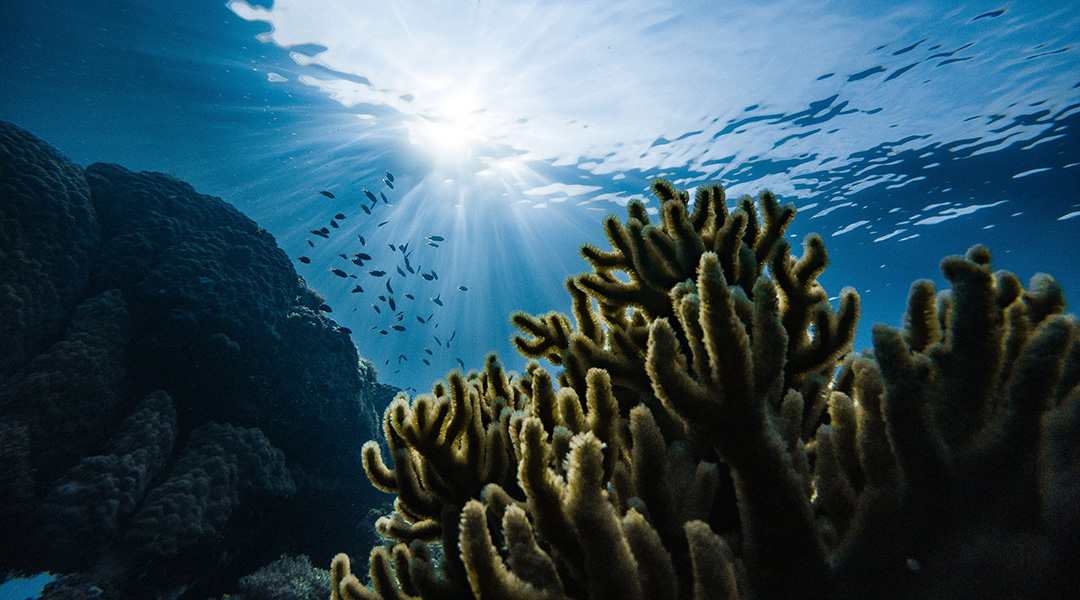Coral reefs are under severe threat from warming oceans, risking extinction by 2100. To counter this, scientists are cryopreserving adult corals, ensuring year-round access to help rebuild future coral populations.
Storing corals’ genetic materials in the form of frozen coral sperm and eggs is not new. Scientists have been doing this for decades hoping to one day use them to repopulate damaged areas. However, coral reefs release reproductive cells only a few nights per year and the cells remain viable for just a few hours. This short timeframe makes it challenging to collect and store them for future use.
A study led by conservation biologist Jonathan Daly in collaboration with the Smithsonian Conservation Biology Institute, the University of Hawaiʻi at Manoa, and the University of Minnesota reports a new approach to preserving adult corals.
“The ability to preserve adult coral tissues would mean that we could biobank threatened coral species year-round, which would greatly improve our ability to secure diversity and prevent extinctions,” explained Daly.
The team’s success lies in combining two cutting-edge techniques for super rapid freezing and thawing. This allows scientists to work with millimeters-sized samples that are prone to damage during conventional cryopreservation. It turns out gold nanoparticles are key.
The danger of losing coral reefs
Corals are crucial animals within ocean ecosystems, often considered “the rainforests of the sea” as they support an incredibly high diversity of marine life. Like rainforests, they also help remove carbon dioxide from the atmosphere, which they use to build their hard calcium carbonate skeleton.
“Ocean warming and acidification due to climate change are the major threats to coral reefs,” stated the authors in their paper. One major impact is on the corals’ symbiotic relationship with the algae living within their tissues called zooxanthellae. These organisms give the coral its vibrant colors along with essential nutrients, and in return, the coral provides a protected environment for the algae.
“When water temperature [and acidity] increase for sustained periods, the symbiont algae start to produce reactive oxygen molecules that stress the corals and cause them to expel the [algae], resulting in a loss of color (bleaching) and loss of the main nutrient source for the coral,” explained Daly.
While corals can survive for a short period without the algae, prolonged bleaching weakens them, making them more susceptible to disease and death. “When this happens on a large scale, there is a shift from coral to algal-dominated habitat, and a subsequent impact on all the species that rely on the coral habitat, including humans,” he added.
The challenge of cryopreservation
A challenge when storing living samples for long periods of time is ice crystals that can form during freezing and thawing, and which damage cells and tissue. While small cells, such as coral eggs or sperm, are not affected, larger tissue samples, like adult corals, are at higher risk due to their longer freezing and warming times, which gives the ice crystals time to form.
To solve this, Daly and his team needed to find a way to quickly process the tissue. They therefore turned to a type of cryopreservation called vitrification, which reduces temperatures at rates of 2500°C per minute — fast enough to prevent the hazardous ice crystals.
When it came to thawing and recovery of the corals, the researchers opted for laser nanowarming, a technique they have successfully used with corals larvae in the past. Unlike the slow and uneven heating of the conventional water bath, this cutting-edge technique uses a laser beam to heat the sample, achieving warming rates of up to 10 million °C per minute.
The key to this ultra-rapid heating? Gold nanoparticles added to the sample before cryopreservation. “The infrared energy emitted by the laser is poorly absorbed by tissues (less than 5%),” said Daly. “This is why we need to add the gold nanoparticles as they efficiently absorb the laser energy and convert it into heat, which is then transferred to the sample.”
A step in the right direction
To test these techniques in adult corals, the researchers worked with Porites compressa, a common species from the Hawaiian coasts. They started by growing small reef fragments in the lab that, after a month, sprouted new coral growth. From the thriving colonies, the researchers carefully selected and froze 90 fragments called polyps to be used as future “seeds” for new coral.
After thawing using nanowarming, the researchers found that 10% of the polyps survived one month later, with the most lost within the first week of recovery. They also observed that the surviving polyps had very few symbiont algae, which could explain the high initial mortality rate. “The poor survival of the [algae] likely reduces the energy available for healing and recovery of the coral, and ultimately could impact the chances of survival following cryopreservation,” said Daly.
Among the reasons for the poor survival of the polyps and the algae, Daly pointed out the complexity of the corals and the diverse organisms that compose them. “The coral is an ecological unit that, besides the coral tissues and skeleton, includes algae and bacterial symbionts,” he said. “As each of these components has different thermal properties, […] this means that we are essentially trying to freeze multiple tissue types (and species) at the same time, so it’s very challenging to balance the individual requirements of each of these components.
Although these results might not appear overly promising, they are actually a significant step forward. For the first time, researchers have demonstrated that it is feasible to preserve an adult coral, paving the way for future improvements in the cryopreservation of such samples.
“[An approach to solve this] would be to induce bleaching before freezing the polyps to remove some of the [algae] from the coral tissues, then cryopreserve the [algae] separately to permit the re-introduction after thawing,” concluded Daly.
Reference: Jonathan Daly, et al., The First Proof of Concept Demonstration of Nanowarming in Coral Tissues, Advanced Sustainable Systems (2023), DOI: 10.1002/adsu.202300303
Feature image: Marek Okon on Unsplash

















